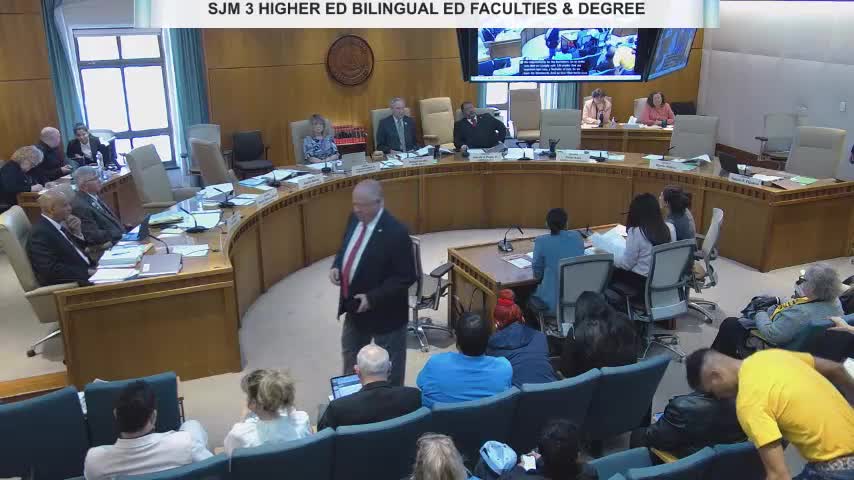New Mexico House committee approves amendment for AEDs in schools
March 12, 2025 | Senate, Legislative, New Mexico
This article was created by AI summarizing key points discussed. AI makes mistakes, so for full details and context, please refer to the video of the full meeting. Please report any errors so we can fix them. Report an error »

A significant step towards enhancing student safety in New Mexico schools was taken during the Senate Education Committee meeting on March 12, 2025. The committee unanimously approved an amendment to House Bill 54, which mandates the installation of Automated External Defibrillators (AEDs) and the development of cardiac emergency response plans in all high schools by the 2026-2027 fiscal year.
Monej Sita from the American Heart Association presented the amendment, clarifying that it streamlines the language of the bill and emphasizes the importance of having AEDs readily available in schools. The bill aims to extend this requirement to all schools, including charter schools, by the 2027-2028 fiscal year. Sita highlighted the flexibility of the plans, allowing schools to tailor their emergency response strategies.
The discussion also touched on the fiscal implications, with estimates suggesting that the cost of equipping schools with AEDs could exceed one million dollars. The initial phase will focus on 18 public high schools, with funding allocated through a previous appropriation bill, Senate Bill 494, which supports training and procurement of AEDs.
Senator Thornton raised concerns about the prevalence of cardiac emergencies in schools, referencing a recent incident in Albuquerque where a student experienced sudden cardiac arrest. Fortunately, trained staff were able to respond effectively, underscoring the necessity of having both AEDs and a solid emergency response plan in place.
The committee's decision to pass the amendment reflects a growing commitment to student health and safety, with plans to revisit funding needs in the future. As schools prepare to implement these life-saving measures, the hope is that they will significantly reduce the risks associated with cardiac emergencies among students.
Monej Sita from the American Heart Association presented the amendment, clarifying that it streamlines the language of the bill and emphasizes the importance of having AEDs readily available in schools. The bill aims to extend this requirement to all schools, including charter schools, by the 2027-2028 fiscal year. Sita highlighted the flexibility of the plans, allowing schools to tailor their emergency response strategies.
The discussion also touched on the fiscal implications, with estimates suggesting that the cost of equipping schools with AEDs could exceed one million dollars. The initial phase will focus on 18 public high schools, with funding allocated through a previous appropriation bill, Senate Bill 494, which supports training and procurement of AEDs.
Senator Thornton raised concerns about the prevalence of cardiac emergencies in schools, referencing a recent incident in Albuquerque where a student experienced sudden cardiac arrest. Fortunately, trained staff were able to respond effectively, underscoring the necessity of having both AEDs and a solid emergency response plan in place.
The committee's decision to pass the amendment reflects a growing commitment to student health and safety, with plans to revisit funding needs in the future. As schools prepare to implement these life-saving measures, the hope is that they will significantly reduce the risks associated with cardiac emergencies among students.
View full meeting
This article is based on a recent meeting—watch the full video and explore the complete transcript for deeper insights into the discussion.
View full meeting
